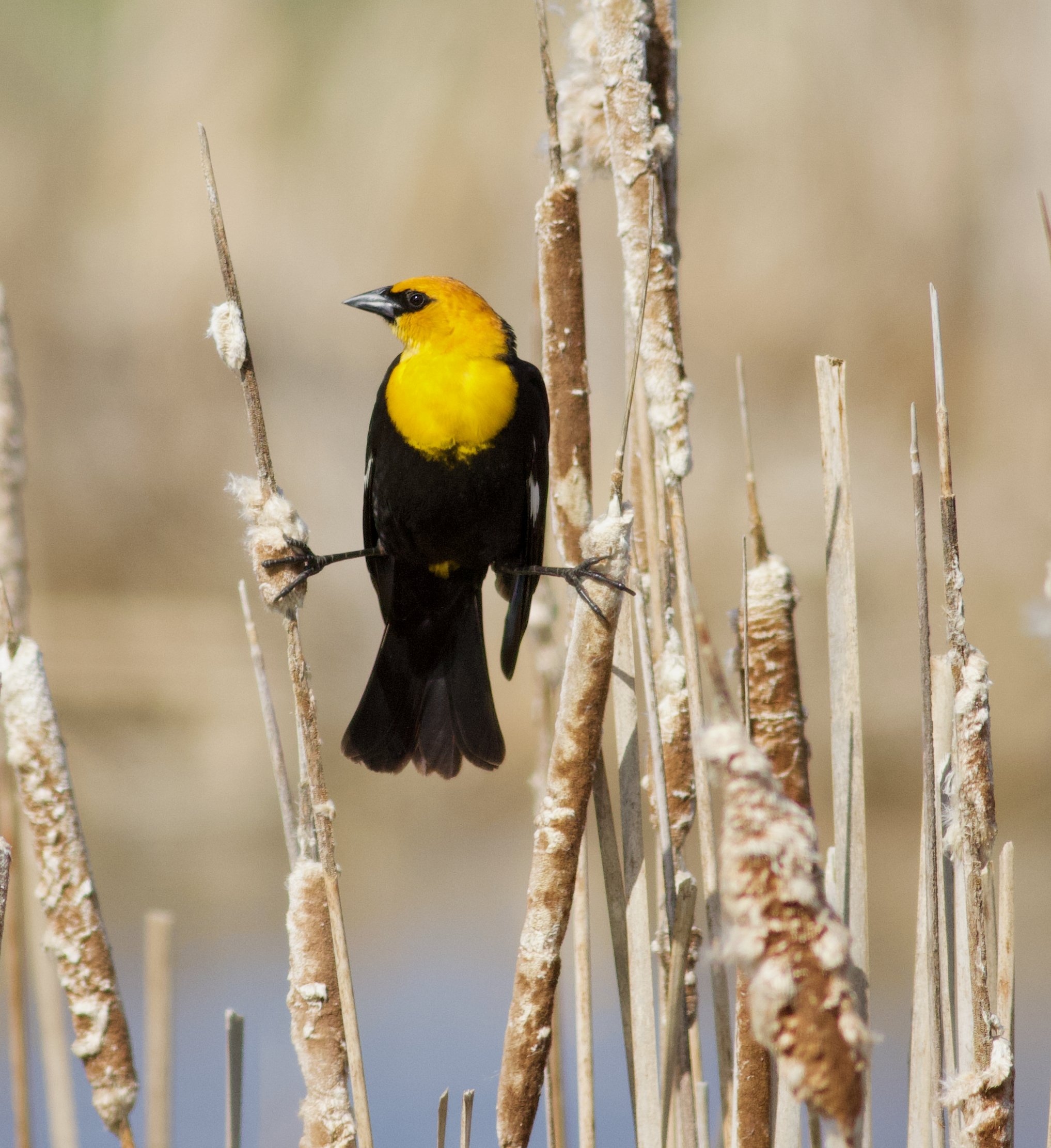This article is an excerpt from our Fall/Winter 2023 Newsletter.
Access the full issue here.
Yellow-headed Blackbird perched on cattails (photo by Arlene Koziol).
Late summer to early fall is cattail season. Surveys in 1992 and 2005 found that the sedge meadows at Fair Meadows Sanctuary had scattered or loose stands of cattails amid a diverse community dominated by tussock sedge, lake sedge, and blue-joint grass. In late summer, we looked forward to the intense purple of swamp thistles, the lovely cream shades of turtlehead and cream gentian, and a background of white shining aster and common boneset interspersed with clumps of pink and purple New England aster.
The emergent marsh vegetation was dominated by water sedge, lake sedge, common bur-reed, marsh skullcap, wild mint, arrowhead, sweet flag, and blue flag (wild iris). Scattered throughout were the spikes of hard-stem and soft-stem bulrush.
In addition to native broad-leaved cattails (Typha latifolia), both surveys noted the looming presence of narrow-leaved (Typha angustifolia) and hybrid cattails (Typha x glauca). Native cattails have been beloved symbols of wetlands, home to many birds and fish, and a food source for Native Americans and early settlers. But the aggressive narrow-leaved cattails from Eurasia have invaded the wetlands of North America and hybridized with the native cattails, overwhelming them and crowding out all other native plants.
Over the past ten years, we watched a gradual increase in cattails in the wetlands of the sanctuary, ending with a seeming explosion until some areas had a solid wall of cattails. Native species were pushed to the periphery or were hanging on as tiny remnants. This was true aggression!
Before: aggressive cattails cover the landscape at Fair Meadows in 2010 (photo by Gary Shackelford).
After: targeted control leads to thriving native sedges in 2020 (photo by Gary Shackelford).
After consulting with several specialists in wetland restoration and doing some experiments on our own, we settled on a method of control using cut-stem treatment with an herbicide approved for aquatic use—imazapyr.
On dense stands, we use a brush cutter with a chisel tooth blade to make a clean cut. We treat the cut stems using a low-pressure backpack sprayer with a sponge tip to directly apply a small amount of chemical. This approach is time-consuming but very targeted, with minimal damage to surrounding native vegetation. In the densest stands, we have seen suppression of native plants for one to two years, followed by excellent recovery of the previous suite of native plants.
The before-and-after is striking!
Written by Penny and Gary Shackelford, Fair Meadows Sanctuary volunteer land managers






